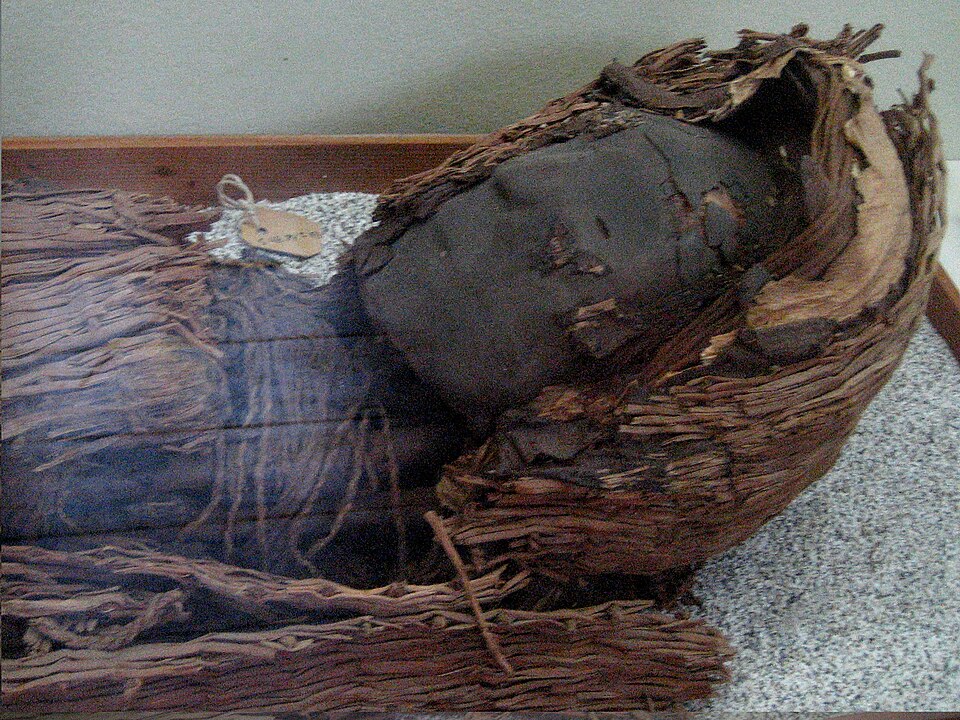When we hear the word “mummy”, the first image that comes to our mind is definitely the long-preserved remains of the pharaohs in ancient Egypt. However, despite this fame, Egyptian specimens are not the oldest mummies in the world.
This nickname goes back to the Chinchorro people, from Chile's Atacama Desert, who mummified their dead 7,000 years ago. This ancient culture of sea hunters was the first to establish itself in northern Chile and southern Peru, around 5450 BC, and soon after their arrival, the Chinchoros began a new funerary practice of preserving their dead in the dry desert sand that surrounded them. they.
Chilean mummies
 (Source: Wikimedia Commons)
(Source: Wikimedia Commons)
The ancient Tombs of Chinchorro have now been inscribed on the UNESCO World Heritage List for their archaeological value, as they not only provide information about this strange form of mummification, but also how these communities functioned as social structures and in a spiritual way.
It is important to note that, unlike the Egyptians who reserved mummification for the social elite, the Chinchoros offered it as a ritual for everyone. How did they mummify their dead? For this reason, the process was somewhat different from what happened in Egypt. First, the body is stripped of its skin and its organs are removed.
Once the body cavities are dry, the skin will be stitched back together. The bodies were also sometimes wrapped in elaborate materials such as reeds, sea lion skins, and alpaca wool. The faces were then covered with clay, then a mask with holes for the eyes and mouth was put on. Finally, the mummies were given wigs made of human hair before being buried in the desert, in the hope that the barren conditions would preserve them forever.
Pieces of history
 (Source: Wikimedia Commons)
(Source: Wikimedia Commons)
The first Chinchorro mummy was documented in 1917 by German archaeologist Max Ohle, who discovered some bodies on the beach. These specimens were clearly ancient, but could not be accurately dated at the time. Then, with the development of radiocarbon dating techniques, it became possible to date the mummies to more than 7,000 years ago.
Since the first discovery more than 100 years ago, hundreds of other mummies have been found in the area. Some were found during construction work or were discovered by curious animals. Communities living in Arica, northern Chile, have long known about these special remains, mainly because the bodies are close to the surface.
Unfortunately, due to climate change, many Chinchorro graves have been discovered due to unnatural weather events, exposing the bodies to the elements. This will have serious implications for its future conservation, as archaeologists struggle to fund efforts to restore and preserve it.
In 2022, a new air-conditioned museum will be built near Arica to house the Chilean mummies. It is hoped that this state-of-the-art facility, worth approximately $19 million, will help protect these valuable artifacts from the distant past.



![[VÍDEO] Elton John’s final show in the UK has the crowd moving](https://www.lodivalleynews.com/wp-content/uploads/2023/06/Elton-John-1-690x600.jpg)

More Stories
The Director of Ibict receives the Coordinator of CESU-PI – Brazilian Institute for Information in Science and Technology
A doctor who spreads fake news about breast cancer is registered with the CRM of Minas
The program offers scholarships to women in the field of science and technology